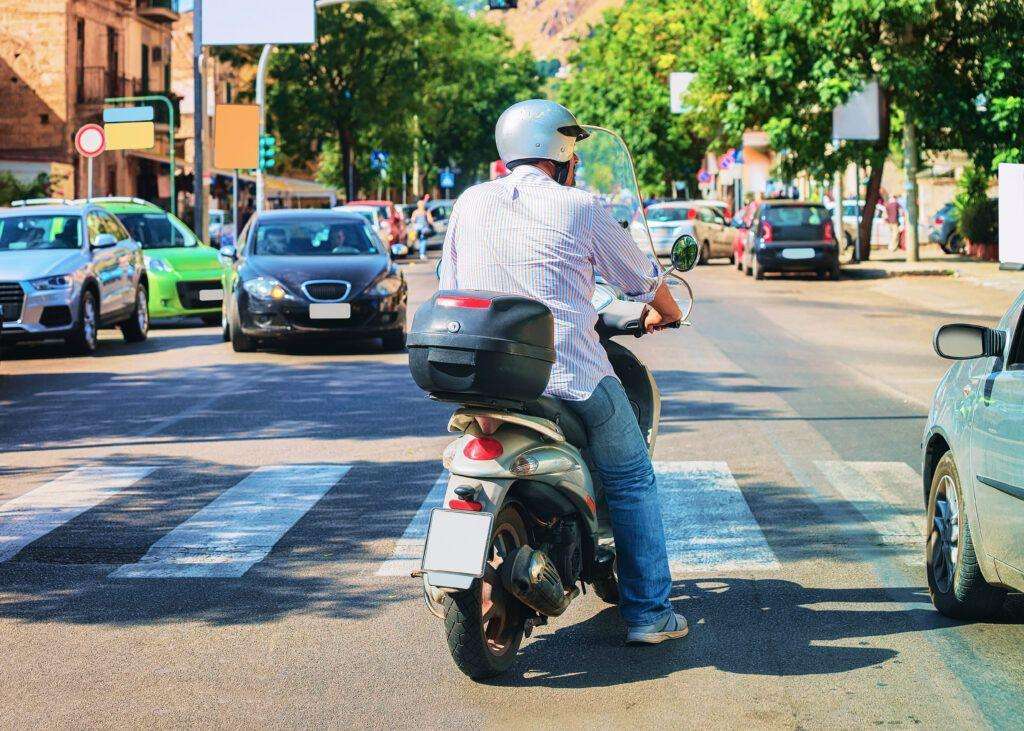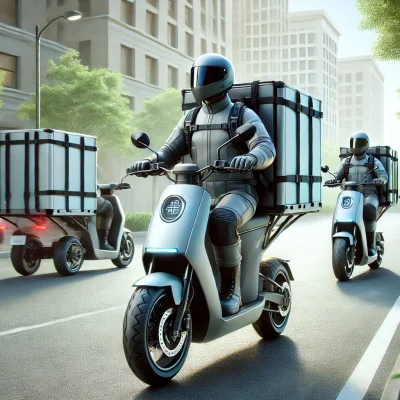Safety is an essential aspect for all lovers and users of two-wheeled vehicles. In this regard, passive safety on motorbikes has become a priority: manufacturers and users are increasingly aware of the importance of protecting the rider in the event of an accident. In this respect, motorbike airbags are a key element in reducing injuries when a collision occurs. In recent years, airbags designed specifically for these means are revolutionising in terms of safety.
The airbag on a motorbike
In terms of motorbike safety, the airbag is simply a system which has been specifically designed to provide extra protection to the rider in the event of an accident. Whilst its function is similar to that of other vehicles, it is tailored to the specific needs of motorbike riders.
Through the use of advanced sensors, it is possible to detect sudden changes in speed, angle and acceleration that may indicate an imminent collision. Once the risk situation has been identified, the airbag will inflate immediately, protecting the rider’s head, neck, torso and back.
The airbag on a motorbike is not intended to replace the use of a proper helmet and other protective devices, rather, it is an additional complement. This, together with safe and responsible driving at all times.
Types of airbags for motorbikes
Motorbike airbags offer a variety of options, each one designed to meet the rider’s preferences and needs. Nevertheless, the most common types are:
- Airbags integrated into vests or jackets
This type of airbag is worn as an additional piece of the rider’s equipment. The vest or jacket contains the integrated airbag system and is worn over protective clothing or equipment. It can shield crucial areas of the body, such as the torso, the back and even the neck. In this case the sensors are activated by the sudden changes in acceleration or inclination.
The airbag vest or jacket is activated in a matter of milliseconds when the rider is thrown into the air due to a fall or collision. This process maintains the alignment of the head-neck-trunk to prevent sudden movements.
There are two types of vest airbags:
-
- Mechanical or physical: pioneers in the market, they are the cheapest and most popular. They use basic technology: a cable attached to the motorbike chassis which, in the event of a fall, tightens and activates the compressed air bottles, inflating the vest or jacket.
- Electronic: these are more expensive as they use more advanced technology, and their batteries require recharging. In this case, the vest or jacket includes sensors capable of anticipating the fall or impact and of opening its air bags in milliseconds.
- Helmet airbag systems
The latest technology in motorbike airbags can be found in helmets. Instead of being integrated into the motorbike or an outer garment, the airbag is located inside the helmet. Using impact sensors and gyroscopes, it inflates in milliseconds when it detects an imminent collision, offering additional protection to the rider’s head and neck.
- Airbags integrated into the motorbike
Some manufacturers have developed airbag systems that are integrated directly into the motorbike. Located in the front fairing or fuel tank, these systems are activated in the event of a collision or accident, providing additional protection to the rider.
The purpose of their design
Motorbike airbags are specially designed to protect key areas of the rider’s body, such as the neck, ribs, vital organs, collarbones and spine. Although they are not mandatory in Spain, they are highly recommended.
- Enforceability
Over 3,000 motorbike road users will be wearing airbag-equipped vests in 2023. This is an initiative that represents one of the General Traffic Directorate (DGT) first steps towards their goal of making this safety system a mandatory requirement for motorbike users in the near future. The DGT plans for airbag garments to be generalised among all motorbike riders, regardless of the type of vehicle, be it a large-displacement vehicle or scooter.
Recent studies highlight the effectiveness of motorbike airbags in protecting the thorax. For example, according to the DGT, the use of airbag jackets reduces the risk of spinal injuries in motorbike accidents from 27% to 14%, compared to these injuries being three times more likely with conventional protective clothing. Thus, airbag garments offer robust protection to the thorax, activating in less than a tenth of a second in a 50 hm/h impact. Studies indicate that airbags reduce the impact force on the thorax by 25% and on the back by 75%.

The wide variety of airbags tailored to motorbikes give motorbike riders multiple options to improve their safety on the road. The choice between vests, integrated systems or helmet airbags will depend on individual preference and the level of protection desired. While they may not be mandatory in Spain, they may soon become so, as they can significantly reduce injuries in the event of an accident.




